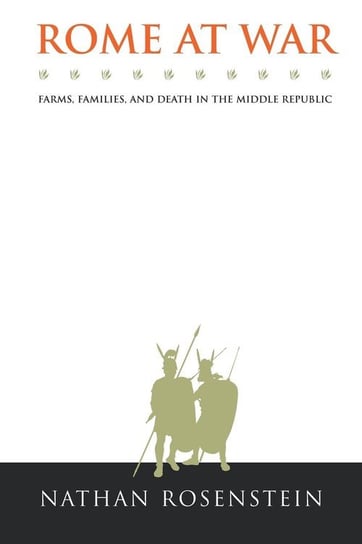Manitoba Historical Society
Published May 6, 2024The Abandoned Manitoba 2 video series by Graham Street, Shaun Cameron, and Gordon Goldsborough visits ghost towns, vacant buildings, and other historic sites from Manitoba’s past. Join us as we explore back roads to places that tell great stories about how things used to be, and how we have ended up where we are today.
In this video, we tour an abandoned seaport at the mouth of the Nelson River on Hudson Bay. Construction started in 1912 and stopped before the work was completed. It never resumed. Instead, all attention moved to Churchill where, in 1929, a deep water seaport opened. We explore the crumbling remains at Port Nelson, including an artificial island a half mile offshore, a rotting 17-span railway bridge, and a broken dredge.
August 22, 2024
Abandoned Manitoba 2: Port Nelson, Manitoba’s Forgotten Seaport on Hudson Bay
QotD: The changing role of the Medieval housewife in England
The transition may also have driven broader cultural shifts. In 1523, Fitzherbert’s Boke of Husbandrie gave a list of a housewife’s jobs (“What warkes a wyfe shulde do in generall”) that included the household’s cooking, cleaning, laundry, and childcare, all of which are typically part of modern housewifery, but also milking cows, taking grain to the miller, malting barley, making butter and cheese, raising pigs and poultry, gardening, growing hemp and flax and then spinning it, weaving, winnowing grain, making hay, cutting grain, selling her produce at market — and, as necessary, helping her husband to fill the dungcart, plow the fields, or load hay. Roles were still highly gendered, but compared to eighteenth and nineteenth century household manuals this is a remarkable amount of time spent out of the house, and the difference holds even when you compare the work hired maids were doing in both periods. Around the time of the advent of coal, though, our descriptions of women’s work increasingly portray it as contained within the walls of the home — or, at most, in the dairy or the poultry yard. Of course social transformations are never monocausal, and the increasing specialization and mechanization that moved some production out of the household probably nudged things along, but Goodman suggests that “the additional demands of running a coal-fired household might have also helped push the idea that a woman’s place is within the home”. After all, if your cleaning takes twice as long, there’s simply less time available for all that agricultural labor and small-scale commerce.
Jane Psmith, “REVIEW: The Domestic Revolution by Ruth Goodman”, Mr. and Mrs. Psmith’s Bookshelf, 2023-05-22.
August 21, 2024
The Korean War Week 009 – Bloody UN Victory at Naktong Bulge – August 20, 1950
The Korean War by Indy Neidell
Published 20 Aug 2024The Marines are deployed to back up the UN forces facing disaster in the Naktong Bulge and by the end of the week the tide has turned, and the crack North Korean 4th Division has been shattered. There is also fighting around the whole rest of the Pusan Perimeter, and it is shrinking from all the attacks, though on the east coast the battle goes in favor of the South Korean forces this week at Pohang-Dong.
(more…)
The Great Enshittification – technological progress is now actually regressing
Ted Gioia provides ten reasons why all our lovely shiny technological improvements have turned into a steady stream of enshittified “updates” that reduce functionality, add unwanted “improvements” and make things significantly less reliable:
By my measure, this reversal started happening around a decade ago. If I had to sum things up in a conceptual chart, it would look like this:
The divergence was easy to ignore at first. We’re so familiar with useful tech that many of us were slow to notice when upgrades turned into downgrades.
But the evidence from the last couple years is impossible to dismiss. And we can’t blame COVID (or other extraneous factors) any longer. Technology is increasingly making matters worse, not better — and at an alarming pace.
[…]
But I have avoided answering, up until now, the biggest question — which is why is this happening?
Or, to be more specific, why is this happening now?
Until recently, most of us welcomed innovation, but something changed. And now a huge number of people are anxious and fearful about the same tech companies they once trusted.
What caused this shift?
That’s a big issue. Unless we understand how things went wrong, we can’t begin to fix them. Otherwise we’re just griping — about bad software or greedy CEOs or whatever.
It’s now time to address the causes, not just complain about symptoms.
Once we do that, we can move to the next steps, namely outlining a regimen for recovery and an eventual cure.
So let me try to lay out my diagnosis as clearly as I can. Below are the ten reasons why tech is now breaking bad.
I apologize in advance for speaking so bluntly. Many will be upset by my frankness. But the circumstances — and the risks involved — demand it.
MG08: The Devil’s Paintbrush
Forgotten Weapons
Published May 6, 2024The MG08 was the German Army standard Maxim gun in World War One. The Germany Navy adopted the Maxim first in 1894, followed by the Army in 1899, then a new pattern in 1901, and finally the MG08 in 1908. This was actually a somewhat old-fashioned pattern of Maxim when it was adopted, as the Germans chose to use the 1889-style lock, which was neither headspace-adjustable nor field-strippable. Their decision was based on the idea that they could produce locked to perfect interchangeable headspace, and field stripping was not really necessary — and they were not wrong in these assumptions. MG08 guns were issued with two spare locks in each sled mount, and that handled any broken parts that might occasionally happen. During the war, about 106,000 MG08s were built by two main factories, the Spandau Arsenal and the DWM company. This remained the standard German Army heavy machine gun until the adoption of the MG34.
(more…)
QotD: Cyclists at “Flyover State”
Compared to your average college town cyclist, Ed Begley Jr. is a paragon of humility. I’ve never understood it, but for so many of my fellow “Americans”, there seems to be this all-purpose Asshole License you can issue yourself. It’s kinda like the “White Privilege” card, in that no one has ever seen one, but unlike “White Privilege”, the people who imagine themselves possessors of the Asshole License use it, every minute of every day. Did the seventeen year old in your life just read The Fountainhead or The Catcher in the Rye? Then you know what I mean — that kid just issued himself the Asshole License. Obviously getting dreadlocks (if you’re White) or existing (if you’re black) grants you the Asshole License, as does “passing a Gender Studies course” or “realizing that Israel’s actions don’t always match up with its rhetoric”.
But, my friends, the easiest way to obtain an Asshole License is to take up cycling. It must be something about those doofy helmets — anyone willing to wear what looks like a giant athletic supporter jammed down over his eyebrows has to be some kind of douchebag to begin with, and since nut-squashing lycra pants must squeeze out whatever residual testosterone they had left, it’s no wonder that cyclists are such bitches.
Severian, “Luxury Beliefs”, Rotten Chestnuts, 2021-06-03.
August 20, 2024
Folk tale fictions about childbirth in “traditional cultures”
Jane Psmith finds that “everyone” has been doing certain “traditional” things during and after childbirth that she somehow wasn’t informed about until just a short while ago:
I just had a baby, which means I have once again been immersed in a sea of advice about how “traditional cultures” do things. And miraculously, every single kid, I discover some new practice I’ve never heard of but that apparently just everyone did until about five minutes ago. This time it was vaginal steaming. (Don’t Google, it’s exactly what it says on the tin.)
Which cultures, exactly? Oh, you know … the traditional ones, the ones whose folk wisdom is untrammeled by Western medicalization, where the pregnant woman is treated to the most nutritious foods, birth is a joyous event surrounded by supportive kin, the new mother puts her baby to the breast the minute he’s born, and she’s waited on hand-and-foot in bed for a month afterwards. So, you know, not the Ngongo of central Africa, who forbid women from eating meat, or the Netsilik Inuit or !Kung, both of whom send laboring women off to give birth in silent isolation, or any of the peoples from Fiji to northern Alberta who delay nursing for days … In fact, you might be excused if you began to suspect that the real measure of how “traditional” a culture is boils down to how much it resembles the practices of crunchy WEIRD people. You might even, if you had a nasty suspicious frame of mind, conclude that all this discussion of “traditional cultures” is just a disguised way of asserting our own preferences.
None of which is actually unique to the babies. (I’ve written about the babies before.) It’s not even unique to our era. The idea that we have been corrupted by civilization, that more primitive societies lead purer, nobler, more harmonious lives and enjoy access to truths and virtues we have lost, goes back millennia.1 And so, naturally, does the practice of using the supposed superiority of those other cultures as clubs to beat our own. Tacitus’ Germania, for instance, is a fun read if borderline useless as a source on the actual Germanic tribes — but it’s a wonderful guide to the angst of the early Empire and the pervasive fear that greed, luxury, and ambition had replaced the nobility, valor, and honor that had once characterized the Romans. Nowadays, of course, no one writes about the barbarians’ fides and virtus; instead you’ll get paeans to their idyllic existence lived in harmony with nature, their peaceful sense of community, and probably their joyful embrace of gender and sexual diversity. But either way, most of the books about small-scale societies are actually books about us and what the people writing the books think we lack.
Even professional anthropologists tend to assume that small-scale (this is a polite way of saying “primitive”) societies are more satisfying, meaningful, and fulfilling than complex ones. But in their case it goes hand in hand with another, allied assumption: that these societies have developed beliefs, practices, and institutions that work well for them. After all, the thinking goes, we know that people change their tools and their behavior when their environment changes, abandoning anything that no longer serves their needs and adopting new ways of life. Therefore, anything they haven’t abandoned must be somehow adaptive. Sure, these “primal communities” might do things that seem odd to us — things like torture, infanticide, ceremonial rape, cannibalism, and so forth — but they must serve some useful function or they wouldn’t have persisted. Thus, for example, the classic ethnography of the Navajo argues that their overwhelming fear of witchcraft, which led to pervasive anxiety, a hypochondriacal obsession with magical curing rituals, and of course regular violence perpetrated against suspected witches, actually had great benefits because it allowed the Navajo direct their stress and hostility at marginal members of the community and “keep the core of the society solid”.
The problem with this framework becomes obvious as soon as you mentally translate from some strange foreigners with funny (or no) clothes to, say, a business in the industrialized world. (Which can easily be larger than the kind of small-scale society that interests anthropologists.) No one would ever say, “Well, sure, the leadership of this company allows their mediocre employees to bully their highly productive peers out of the department so they do better in the stack ranking, but the company hasn’t gone bankrupt so it must be a savvy business move. Probably the solidarity created by banding together to surreptitiously delete someone else’s code enhances productivity more than losing a 10x engineer detracts from it …” But this is exactly what anthropologists (professional and armchair) are tempted to do when they set out to understand and explain another culture. Yes, sometimes apparently bizarre behavior contains a deep and hidden wisdom, but sometimes it’s just messed up.
That’s the case the late UCLA anthropologist Robert Edgerton set out to make in Sick Societies: that some primitive societies are not actually happy and fulfilled, that some of their beliefs and institutions are inadequate or actively harmful to their people, and that some of them are frankly on their way to cultural suicide. The mere fact that people keep doing something doesn’t mean it’s actually working well for them, but just as the market can stay irrational longer than you can stay solvent, your society can stay dysfunctional longer than you can stay alive.
1. At least in the Occident. My informant tells me that the Noble Savage is a less common trope in, say, China. Maybe the Blue savages are just less noble.
German magazine Der Spiegel warns about “The Secret Hitlers” of the far right who threaten western civilization
The spectre of Hitlerian fascism looms over the western world once again, but Der Spiegel won’t take this threat lying down:

“How Fascism Begins”: The present cover of Der Spiegel, depicting Björn Höcke, Marine le Pen and Donald Trump as the new fascists. Establishment German hysteria about “the right” is now achieving an intensity to rival American hysteria about race during the Summer of Floyd.
Hitler is not like other mortals; he may not really be dead, and his spirit is likely to return at any moment. Perhaps it already has. This is why our foremost news magazine, Der Spiegel, chose this image to head their cover story on “The Secret Hitlers“, a bizarre opus of current-year political lunacy penned by Lothar Gorris and Tobias Rapp.
“Is fascism returning?” Gorris and Rapp want to know. “Or is it already here, in the form of [Donald] Trump, [Viktor] Orbán [or Björn] Höcke? And if so, could it disappear again?” What follows, they explain, is “an attempt to identify evil”.
This is the kind of insanity that comes over you when you elevate establishment political ideology into a civic religion. You reduce the entire project of state politics to a dubious exercise in piety, where the aim is not to achieve good outcomes or develop pragmatic solutions, but to engage in moral peacockery. For the Gorrises and the Rapps of our discourse, the greatest problem facing the liberal faithful of the Federal Republic is not mass migration, deindustrialisation, soon-to-be-insolvent pension programmes or the overblown state entitlement system, oh no. It is finding and rooting out mythological political demons and preventing the second coming of the secular antichrist.
Gorris and Rapp (for convenience, I will refer to these feeble-minded men henceforth as Grapp) open with an extended anecdote about a 2016 board game called Secret Hitler.
The setting is the year 1932, the Reichstag in Berlin. The players are divided into two groups: Fascists and Democrats, with the Democrats making up the majority, which sounds familiar. The Fascists have a decisive advantage at the start: they know who the other Fascists are, which also reflects the truth in the history books. The Democrats don’t have this information; every other player could be friend or foe. The fascists win the game if they get six laws through the Reichstag or if Hitler is elected Chancellor. To win, the Democrats must pass five laws or expose and kill Hitler.
The basic premise of the game is that everyone pretends to be democrats. In truth, the real democrats would only have to trust each other and the fascists wouldn’t stand a chance. But it’s not that simple, because sometimes the democrats have to vote in favour of a fascist law for lack of options and therefore fall under suspicion of fascism. Which is exactly what the fascists want.
One realisation: there is no guarantee of the right strategy that will ultimately see the good guys win and the bad guys lose. One wrong decision that feels right, and Hitler is Reich Chancellor. It was all chance, just as there was no inevitability in 1933. The other realisation: it can be fun to be a fascist.
The cryptofascist myth will never cease to amaze me. Absolutely everybody in 1933 knew who “the fascists” were. The ones in Italy literally called themselves fascists, which was one way to identify them. The ones in Germany openly derided liberalism and dreamed of a nationalist revolution that would put an end to the hated bourgeois democracy of the Weimar Republic. Hitler was a national politician who wrote and spoke openly of his aims. Secret Hitler in no way “reflects the truth in the history books”. It is a deformed fantasy about modern politics, which reflects nothing so much as the burning demand for and the vanishing supply of actual Nazis to hyperventilate about.
Now it is true that a lot of erstwhile liberals went over to National Socialism after the Nazis seized power, but these were not the secret fascists of Grappian fever dreams. The were just followers, as are a great many of the self-professed liberals active today. Were communists or illiberal nationalists to take over tomorrow, millions of people would line up behind the new political ideology like the sheep that they are, and I suspect that Grapp would be right at the head of that line.
Because our crack fascist identifiers suffer from a crushing lack of self-awareness, they declare that “relapsing into fascism is the primal fear of modern democratic societies”. Such a relapse, they explain, “long sounded hysterical and unimaginable”, but “now it seems serious and real”.
You’re the Top! A History of the Top Hat
HatHistorian
Published Nov 21, 2021A short history of one of the most recognizable and formal hats of our time: the top hat!
Version française ici:
• Le top du top: l’histoire du Haut-de-…With thanks to Norman Caruso for advice on how to get me started on youtube. Please check out his channel
The first top hat belonged to my great grandfather and is the better part of a century old.
The collapsible top hat comes from from Delmonico Hatter https://www.delmonicohatter.com/Title sequence designed by Alexandre Mahler
am.design@live.comThis video was done for entertainment and educational purposes. No copyright infringement of any sort was intended.
August 19, 2024
Bret Devereaux on Nathan Rosenstein’s Rome at War (2004)
Although Dr. Devereaux is taking a bit of time away from the more typical blogging topics he usually covers on A Collection of Unmitigated Pedantry, he still discusses books related to his area of specialty:
For this week’s book recommendation, I want to recommend N. Rosenstein, Rome at War: Farms, Families and Death in the Middle Republic (2004). This is something of a variation from my normal recommendations, so I want to lead with a necessary caveat: this book is not a light or easy read. It was written for specialists and expects the reader to do some work to fully understand its arguments. That said, it isn’t written in impenetrable “academese” – indeed, the ideas here are very concrete, dealing with food production, family formation, mortality and military service. But they’re also fairly technical and Rosenstein doesn’t always stop to recap what he has said and draw fully the conclusions he has reached and so a bit of that work is left to the reader.
That said, this is probably in the top ten or so books that have shaped me as a scholar and influenced my own thinking – as attentive readers can no doubt recall seeing this book show up a lot in my footnotes and citations. And much like another book I’ve recommended, Landers, The Field and the Forge: Population, Production and Power in the Pre-Industrial West (2003), this is the sort of book that moves you beyond the generalizations about ancient societies you might get in a more general treatment (“low productivity, high mortality, youth-shifted age profile, etc.”) down to the actual evidence and methods we have to estimate and understand that.
Fundamentally, Rome at War is an exercise in “modeling” – creating (fairly simple) statistical models to simulate things for which we do not have vast amounts of hard data, but for which we can more or less estimate. For instance, we do not have the complete financial records for a statistically significant sample of Roman small farmers; indeed, we do not have such for any Roman small farmers. So instead, Rosenstein begins with some evidence-informed estimates about typical family size and construction and combines them with some equally evidence-informed estimates about the productivity of ancient farms and their size and then “simulates” that household. That sort of approach informs the entire book.
Fundamentally, Rosenstein is seeking to examine the causes of a key Roman political event: the agrarian land-reform program of Tiberius Gracchus in 133, but the road he takes getting there is equally interesting. He begins by demonstrating that based on what we know the issue with the structure of agriculture in Roman Italy was not, strictly speaking “low productivity” so much as inefficient labor allocation (a note you will have seen me come back to a lot): farms too small for the families – as units of labor – which farmed them. That is a very interesting observation generally, but his point in reaching it is to show that this is why Roman can conscript these fellows so aggressively: this is mostly surplus labor so pulling it out of the countryside does not undermine these households (usually). But that pulls a major pillar – that heavy Roman conscription undermined small freeholders in Italy in the Second Century – out of the traditional reading of the land reforms.
Instead, Rosenstein then moves on to modeling Roman military mortality, arguing that, based on what we know, the real problem is that Rome spends the second century winning a lot. As a result, lots of young men who normally might have died in war – certainly in the massive wars of the third century (Pyrrhic and Punic) – survived their military service, but remained surplus to the labor needs of the countryside and thus a strain on their small households. These fellows then started to accumulate. Meanwhile, the nature of the Roman census (self-reported on the honor system) and late second century Roman military service (often unprofitable and dangerous in Spain, but not with the sort of massive armies of the previous centuries which might cause demographically significant losses) meant that more Romans might have been dodging the draft by under-reporting in the census. Which leads to his conclusion: when Tiberius Gracchus looks out, he sees both large numbers of landless Romans accumulating in Rome (and angry) and also falling census rolls for the Roman smallholder class and assumes that the Roman peasantry is being economically devastated by expanding slave estates and his solution is land reform. But what is actually happening is population growth combined with falling census registration, which in turn explains why the land reform program doesn’t produce nearly as much change as you’d expect, despite being more or less implemented.
Those conclusions remain both important and contested. What I think will be more valuable for most readers is instead the path Rosenstein takes to reach them, which walks through so much of the nuts-and-bolts of Roman life: marriage patterns, childbearing patterns, agricultural productivity, military service rates, mortality rates and so on. These are, invariably, estimates built on estimates of estimates and so exist with fairly large “error bars” and uncertainty, but they are, for the most part, the best the evidence will support and serve to put meat on the bones of those standard generalizing descriptions of ancient society.
If you’ve never worked in the private sector, you have no idea how regulations impact businesses
In the National Post, J.D. Tuccille explain why Democratic candidates like Kamala Harris and Tim Walz who have spent little or no time in the non-government world have such rosy views of the benefits of government control with no concept of the costs such control imposes:

The respective public versus private sector experiences of the 2024 Presidential/Vice Presidential candidates.
New York Times
In broad terms, Democrats have faith in government while the GOP is skeptical — though a lot of Republicans are willing to suspend disbelief when their party controls the executive branch.
The contrast between the two parties can be seen in stark terms in the resumes of the two presidential and vice-presidential tickets. The New York Times made it easier to compare them earlier this month when it ran charts of the career timelines of Trump, J.D. Vance, Kamala Harris and Tim Walz. Their roles at any given age were colour-coded for college, military, private sector, public service or politics, federal government and candidate for federal office.
Peach is the colour used by the Times to indicate employment in the private sector, which produces the opportunities and wealth that are mugged away (taxation is theft by another name, after all) to fund all other sectors. It appears under the headings of “businessman” and “television personality” for Trump and as “lawyer and venture capitalist” for Vance. But private-sector peach appears nowhere in the timelines for Harris and Walz. Besides, perhaps, some odd jobs when they were young, neither of the Democrats has worked in the private sector.
Now, not all private-sector jobs are created equal. Some of the Republican presidential candidate’s ventures, like Trump University, have been highly sketchy, as are some of his practices — he’s openly boasted about donating to politicians to gain favours (though try to do business in New York without greasing palms). I’m not sure I’d want The Apprentice on my resume. But there must be some value to working on the receiving end of the various regulations and taxes government officials foist on society rather than spending one’s career brainstorming more rules without ever suffering the consequences.
In 1992, former U.S. senator and 1972 Democratic presidential candidate George McGovern penned a column for the Wall Street Journal about the challenges he encountered investing in a hotel after many years in government.
“In retrospect, I … wish that during the years I was in public office, I had had this firsthand experience about the difficulties business people face every day,” he wrote. He bemoaned “federal, state and local rules” passed with seemingly good intentions but little thought to the burdens and costs they imposed.
The lack of private sector stints in the career timelines of Harris and Walz means that, like pre-hotel McGovern, they’ve never had to worry about what it’s like to suffer the policies of a large and intrusive government.
That said, it’s possible to overstate the lessons learned by Republicans and Democrats from their different experiences. Vance, despite having worked to fund and launch businesses, has, since being elected to the U.S. Senate, advocated capturing the regulatory state and repurposing it for political uses, including punishing enemies.
Not only does power corrupt, but it does so quickly.
The US Navy’s mis-managed decline continues
Niccolo Soldo from his weekend wrap-up of various news articles that caught his eye:

Artist’s rendering of the US Navy’s FFG(X) Constellation-class guided missile frigate. Initial contract awarded 30 April, 2020, but delivery of the first ship is not expected until 2029 due to design changes and other issues.
US Navy image via Wikimedia Commons.
One data point that works in favour of American Declinism is the US Navy’s inability to not just keep up with the Chinese in terms of the production of ships, but to also maintain its own production output. Many lightly-armed littoral combat ships have been retired, for example, with nothing to replace them.
These production setbacks have been pointed out to me, with one mutual on Twitter/X reiterating the point so that I get it (I do!). This is an actual problem that requires solving, and fast. It is partially to blame for the Americans effectively ceding the Red Sea to the Houthis (for now).
AP has done a partial deep-dive (horrible language here, I apologize) on this issue:
The labor shortage is one of myriad challenges that have led to backlogs in ship production and maintenance at a time when the Navy faces expanding global threats. Combined with shifting defense priorities, last-minute design changes and cost overruns, it has put the U.S. behind China in the number of ships at its disposal — and the gap is widening.
Navy shipbuilding is currently in “a terrible state” — the worst in a quarter century, says Eric Labs, a longtime naval analyst at the Congressional Budget Office. “I feel alarmed,” he said. “I don’t see a fast, easy way to get out of this problem. It’s taken us a long time to get into it.”
Marinette Marine is under contract to build six guided-missile frigates — the Navy’s newest surface warships — with options to build four more. But it only has enough workers to produce one frigate a year, according to Labs.
A lot of the guys who know how to do this work are retiring or have already retired. Sound familiar?
One of the industry’s chief problems is the struggle to hire and retain laborers for the challenging work of building new ships as graying veterans retire, taking decades of experience with them.
Shipyards across the country have created training academies and partnered with technical colleges to provide workers with the skills they need to construct high-tech warships. Submarine builders and the Navy formed an alliance to promote manufacturing careers, and shipyards are offering perks to retain workers once they’re hired.
Andreini trained for his job at Marinette through a program at Northeast Wisconsin Technical College. Prior to that, he spent several years as a production line welder, making components for garbage trucks. He said some of his buddies are held back by the stigma that shipbuilding is a “crappy work environment, and it’s unsafe.”
The problem:
Much of the blame for U.S. shipbuilding’s current woes lies with the Navy, which frequently changes requirements, requests upgrades and tweaks designs after shipbuilders have begun construction.
That’s seen in cost overruns, technological challenges and delays in the Navy’s newest aircraft carrier, the USS Ford; the spiking of a gun system for a stealth destroyer program after its rocket-assisted projectiles became too costly; and the early retirement of some of the Navy’s lightly armored littoral combat ships, which were prone to breaking down.
The Navy vowed to learn from those past lessons with the new frigates they are building at Marinette Marine. The frigates are prized because they’re less costly to produce than larger destroyers but have similar weapon systems.
Now check this out:
The Navy chose a ship design already in use by navies in France and Italy instead of starting from scratch. The idea was that 15% of the vessel would be updated to meet U.S. Navy specifications, while 85% would remain unchanged, reducing costs and speeding construction.
Instead, the opposite happened: The Navy redesigned 85% of the ship, resulting in cost increases and construction delays, said Bryan Clark, an analyst at the Washington-based think tank Hudson Institute. Construction of the first-in-class Constellation warship, which began in August 2022, is now three years behind schedule, with delivery pushed back to 2029.
The final design still isn’t completed.
Shifting threats:
Throughout its history, the Navy has had to adapt to varying perils, whether it be the Cold War of past decades or current threats including war in the Middle East, growing competition from Chinese and Russian navies, piracy off the coast of Somalia and persistent attacks on commercial ships by Houthi rebels in Yemen.
And that’s not all. The consolidation of shipyards and funding uncertainties have disrupted the cadence of ship construction and stymied long-term investments and planning, says Matthew Paxton of the Shipbuilders Council of America, a national trade association.
“We’ve been dealing with inconsistent shipbuilding plans for years,” Paxton said. “When we finally start ramping up, the Navy is shocked that we lost members of our workforce.”
How is the US Navy supposed to protect Taiwan from a potential Chinese invasion?
Evolution of WW2 German Tank Destroyers
The Tank Museum
Published May 3, 2024 19 productsUsed extensively by the German army of World War Two, the “tank destroyer” was developed to counter the increasing dominance of the tank on the battlefield.
Germany would field a massive 18 different types of tank destroyer in World War Two – compared with the 7 or 8 different types used by US, British and Commonwealth forces. One of these in particular, Sturmgeschütz III, would destroy more tanks than any other AFV in the entire conflict.
In this video we look at the development, strengths and weaknesses of German tank destroyers: from the 17 tonne Hetzer to the massive 70 tonne Jagdtiger — the heaviest tracked vehicle of the War.
00:00 | Introduction
00:59 | The First Tank Destroyers
04:14 | Avoiding Close Combat
06:59 | Jagdpanther
12:05 | Jagdtiger
15:31 | Hetzer
18:01 | Stug III
22:51 | ConclusionThis video features archive footage courtesy of British Pathé.
#tankmuseum #jagdpanther #stugiii #hetzer #jagdtiger








